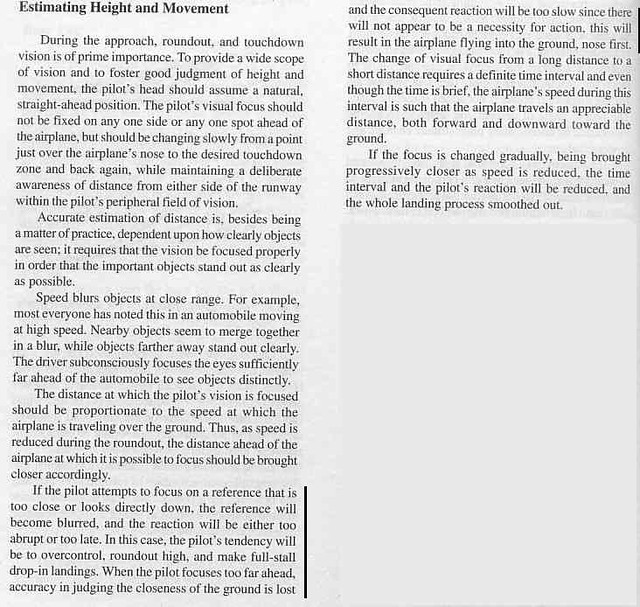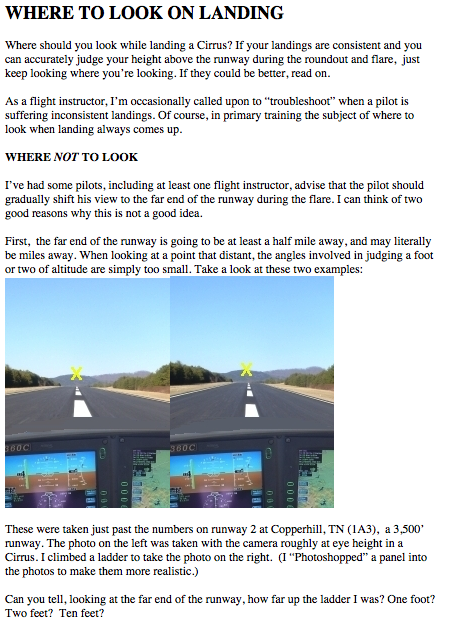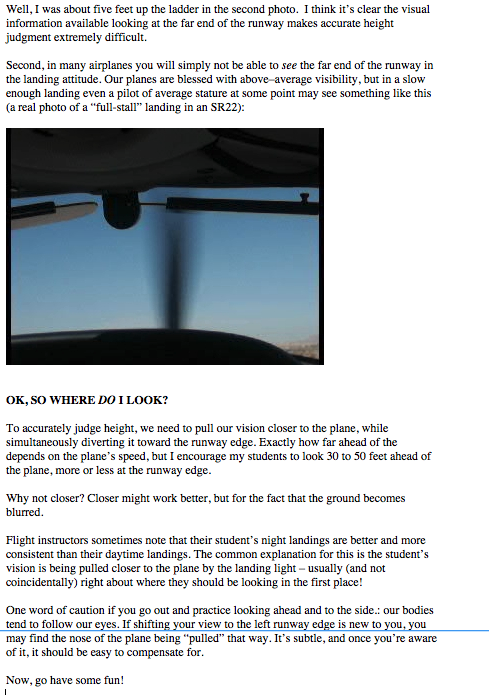RomeoSierra
Filing Flight Plan
- Joined
- Dec 8, 2017
- Messages
- 15
- Display Name
Display name:
Romeo Sierra
Hi,
So I’ve currently just finished lesson 5 and today we spent nearly all of the lesson on just landings. I was doing them ok yesterday but today I really sucked at them, except at a practice of an emergency landing simulating an engine out which I did quite well, and probably one of my best landings to date.
Anyway, my problem seems to be flaring too late, I can’t quite judge when to round out and when to flare and my CFI has to keep taking over or helping out at last minute. I’ve seen some tips online about trying to just fly in ground effect for a little bit first before flaring but my CFI seems to want to flare right away and not glide level at first which makes me feel rushed and then flare too much as have too high an airspeed or I’m not flaring enough.
So question is, any tips on learning when to flare and is it ok to glide a little at level attitude once in ground effect to get ready for flare? I’m flying a Sportcruiser which lands in hardly any distance so running out of runway is absolutely no issue.
Thanks
So I’ve currently just finished lesson 5 and today we spent nearly all of the lesson on just landings. I was doing them ok yesterday but today I really sucked at them, except at a practice of an emergency landing simulating an engine out which I did quite well, and probably one of my best landings to date.
Anyway, my problem seems to be flaring too late, I can’t quite judge when to round out and when to flare and my CFI has to keep taking over or helping out at last minute. I’ve seen some tips online about trying to just fly in ground effect for a little bit first before flaring but my CFI seems to want to flare right away and not glide level at first which makes me feel rushed and then flare too much as have too high an airspeed or I’m not flaring enough.
So question is, any tips on learning when to flare and is it ok to glide a little at level attitude once in ground effect to get ready for flare? I’m flying a Sportcruiser which lands in hardly any distance so running out of runway is absolutely no issue.
Thanks



